http://www.rhci-online.net/radiogram/radiogram.htm
RSID: <<2019-01-
http://www.rhci-online.net/radiogram/radiogram.htm
RSID: <<2019-01-
12T13:30Z MFSK-64 @ 11600000+1500>>
Sunrise in the rear view mirror, Annandale, Virginia ...
Sending Pic:128x108C;
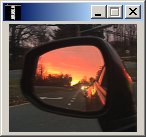
bit.ly/2M0KDVB
Please report decode to
themightykbc@gmail.com
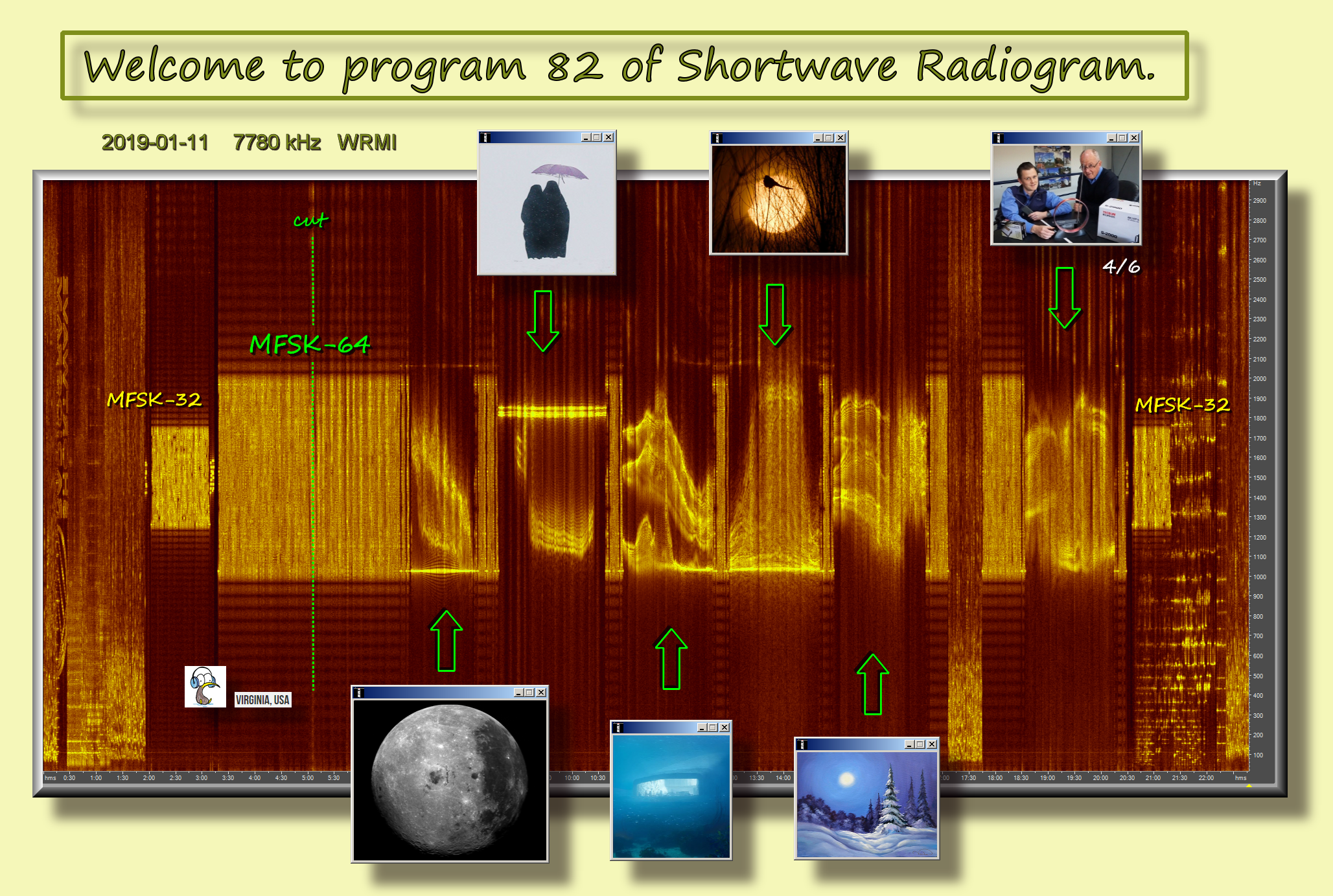
RSID: <<2019-01-11T20:31Z MFSK-32 @ 7780000+1500>>
Welcome to program 82 of Shortwave Radiogram.
I'm Kim Andrew Elliott in Arlington, Virginia USA.
Here is the lineup for today's program, in MFSK modes as noted:
1:39 MFSK32: Program preview (now)
3:05 MFSK64: China targets internet users seeking news**
8:33 Astronomy from the far side of the moon*
15:33 This week's images*
24:06 Tecsun Radios International decoding competition*
27:49 MFSK32: Closing annnouncements
* with image(s)
** use UTF8 character set for the Chinese characters
Please send reception reports to
radiogram@verizon.net
And visit http://swradiogram.net
Twitter:
@SWRadiogram
RSID: <<2019-01-11T20:33Z
MFSK-64 @
7780000+1500>>
This is Shortwave Radiogram in MFSK64
Please send your reception report to
radiogram@verizon.net
From Radio Free Asia:
China Actively Targeting Internet Users For Browsing Overseas
Websites, Social Media
7 January 2019
Authorities in China are actively pursuing internet users who use
circumvention tools to avoid the complex system of blocks,
filters and human censorship known collectively as the Great
Firewall.
Police in Rongchang district of the southwestern megacity of
Chongqing handed an official summons and warning to internet user
Huang Chengcheng for "setting up and using illegal channels to
access the international internet."
Huang was held for eight hours of questioning on Jan. 4, his
phone scanned, and his posts to overseas social media sites
gathered by police for use as evidence.
Police said Huang's posts had "seriously contravened laws and
regulations," and warned him not to use circumvention tools
again, according to the Civil Rights and Livelihood Watch rights
website.
An internet user surnamed Liu who frequently uses virtual private
networks (VPNs) to scale the Great Firewall said the ruling
Chinese Communist Party doesn't want its citizens to have free
access to non-government sources of information.
"VPNs are specifically designed to get around China's Great
Firewall, meaning that we can see how different the news is in
China, where it is tightly controlled, to the U.S., where the
flow of information is relatively free," Liu said.
"[We can also see] by comparison how they are more advanced than
we are in terms of the information economy and in terms of
democracy," he said. "There is going to be a backlash; an
inevitable side-effect of the suppression of news, and also an
expression of the curiosity that oppressed people have about the
outside world."
Meanwhile, police in the southern province of Guangdong issued an
administrative punishment to an internet user surnamed Zhu for
"setting up and using illegal channels to access the
international internet."
haYcording to the official WeChat social media account of the
Shaoguan municipal police department, Zhu was fined 1,000 yuan on
Dec. 27 for his use of the Lantern Pro app to circumvent
government censorship, in violation of articles 6 and 14 of
China's "Interim provisions for the management of computer
information networks (international internet)."
A duty officer who answered the phone at the Shaoguan police
department declined to comment, referring inquiries to the
internet police.
But an officer who answered the phone at the Shaoguan municipal
internet police said they didn't know anything about Zhu's case.
Scaling the wall
Rights lawyer Liang Xiaojun said fining people for viewing the
overseas internet is "ridiculous," but that not everyone in China
is concerned about it.
"Actually they are forbidding people from circumventing the Great
Firewall in order to control their thoughts," Liang said. "But
many people in China think that they don't need to scale the
Great Firewall to view things outside ... there are so many
different types of information on Weibo, and that's enough."
"Others don't need to scale the wall, so they don't think there's
a problem.
An internet user surnamed Wu from the southwestern province of
Sichuan said the government doesn't want people to see anything
that challenges the official version of the news.
"They are afraid that we will be able to learn more," she said.
"There are a lot of things we can't even see."
An internet user who asked for anonymity said: "The Chinese
Communist Party is trying to control all aspects of society to
maintain its political power. It monitors people's thoughts and
behavior, and suppresses the vitality of the whole of society."
Over the last two decades, China’s Great Firewall has grown into
an alarmingly effective apparatus of censorship and surveillance,
according to the 2018 Freedom on the Net report published by
Freedom House.
"Internet controls within China reached new extremes in 2018 with
the implementation of the sweeping Cybersecurity Law and upgrades
to surveillance technology," the report said.
It said Beijing is also seeking to propagate its model of online
censorship overseas by conducting large-scale trainings of
foreign officials, providing technology to authoritarian
governments, and demanding that international companies abide by
its content regulations even when operating outside of China.
"These trends present an existential threat to the future of the
open internet and prospects for greater democracy around the
globe," the report said.
Reported by Qiao Long for RFA's Mandarin Service, and by Ma
Lap-hak and Fok Leung-kiu for the Cantonese Service. Translated
and edited by Luisetta Mudie.
https://www.rfa.org/english/news/china/vpn-punish-01072019151116.html
Next, an excerpt of the same news story as reported by RFA in
Mandarin ...
网络严控:中国网民翻墙叚
2019-01-07
中国网络警察正在严密监控互联网用户。广东、重庆至少两位网民因通过vpn(虚拟私人网路)等方式“翻墙”浏览境外网站,被警方警告及处以
罚款。
2019新年伊始,就传出中国网民因使用虚拟私人网路浏览境外网站,遭警方传唤及处罚。上周五(4日),重庆网民黄成城被该市公安局荣昌区
分局传唤、警告;公安发出的通知书指其“擅自建立、使用非法定信道进行国际联网”,将他带进警局接受调查8小时。被调查期间,黄成城的手机
被公安检查,他在境外社交网站发布的帖子被公安当作指控的证据。公安指黄在境外网站发表政治言论“违法违规”,情节严重。据民生观察工作室
网站称,警方说,黄成城“翻墙”登陆境外网站是违法行为,情节严重的可以判刑,恐吓他以后不得再“翻墙”。
https://www.rfa.org/mandarin/yataibaodao/meiti/ql2-01072019090753.html
|
|
|
Zu Beginn des Jahres 2019 wurden
die chinesischen Internetnutzer von der Polizei vorgeladen und bestraft,
weil sie das virtuelle private Netzwerk zum Durchsuchen von Websites im
Ausland verwendet hatten. Während der Untersuchung wurde das Mobiltelefon von Huang Chengcheng von der öffentlichen Sicherheit kontrolliert. Seine Beiträge auf den sozialen Netzwerken in Übersee wurden von der öffentlichen Sicherheit als Beweismittel verwendet. Der Beamte des öffentlichen Sicherheitsdienstes sagte, dass Huangs politische Rede auf der ausländischen Website "gegen Gesetze und Vorschriften verstößt" und die Umstände ernst waren. Laut der Website des Minsheng Observation Studio sagte die Polizei, Huang Chengchengs Aktivitäten auf Übersee-Websites seien illegal. Wenn sich die Umstände als schwerwiegend erweisen kann er verurteilt werden und ihm drohen dann ein "Aufenthalt hinter realen Mauern".
|
This is Shortwave Radiogram in MFSK64
Please send your reception report to
radiogram@verizon.net
From New Atlas:
How radio astronomers will tune into the cosmic dawn from the far
side of the Moon
Nick Lavars
8 January 2019
China's history-making Chang'e-4 spacecraft touched down on the
far side of the Moon last week and it opened up some exciting new
avenues of scientific enquiry. While the rover goes to work
examining the makeup of the lunar crust and mantle, a small radio
instrument aboard a satellite parked in lunar orbit will allow
scientists to listen into low-frequency signals that are blocked
by the Earth's atmosphere. So, after falling on deaf ears for so
long, what could these secretive radio waves tell us?
We first detected radio waves from space in the 1930s, but it
wasn't until after World War II and advances in radar technology
that things really got interesting. One well-known example of
this was the detection of Cosmic Microwave Background Radiation
in the 1960s, the lingering glow of the Big Bang, which earned
the discoverers the 1978 Nobel Prize in Physics.
Since then, radio waves have been instrumental in furthering our
understanding of the universe. By processing the information
gathered by these telescopes, astronomers have been able to
detect new kinds of objects, such as pulsars and quasars, and use
radio waves emanating from distant hydrogen clouds to map out the
structures of faraway galaxies.
While they have taught us a lot, the huge dish antennas we use to
collect radio waves on Earth are only painting part of the
picture. Our atmosphere blocks radio waves at lower frequencies
before they can reach us, but scientists theorize that we could
learn a lot from them, particularly about the early universe, if
only we could tune in.
While suitably equipped instruments have been sent to space for
this purpose before, their visits were short-lived. And though
modern space probes are fitted with radio instruments, they are
not designed with radio astronomy in mind. Conversely, a small
instrument developed by astronomer Marc Klein Wolt's team at
Radboud University and sent along as part of the Chang'e-4
mission to the Moon, very much was.
Developed in partnership with Dutch radio astronomy organization
ASTRON and private company Innovative Solution in Space, the NCLE
– Netherlands-China Low-Frequency Explorer – instrument hitched a
ride to the Moon on the Queqiao satellite back in May. This
satellite was sent ahead of the Chang'e-4 lander itself, because
the Moon blocks all radio contact from Earth and so to land on
its far side requires signals to be relayed somehow. In this
case, scientists have done so via a satellite parked out beyond
the Moon with clear communication lines both down to the surface
and back to Earth.
We put a few questions to Klein Wolt about the traditional
troubles in getting radio astronomy into space, how these
challenges were overcome and his hopes for this relatively small
but potentially game-changing instrument.
What attempts have been made to get radio telescopes into space
before?
The last dedicated instruments date back to
the 1970s, RAE-1
and 2. They went behind the Moon and back
once, but did not
have the same resolution that we have and
were very short
missions of a couple of days, and we need
long integration
times! In the meantime there have been
radio instruments
with relatively low frequencies, Cassini
for instance has a
low-frequency instrument, but these are not
designed for our
science and do not go to such low
frequencies as we do.
Why has it been so difficult to get radio telescopes beyond
the atmosphere and into space?
Costs mostly. Digit) w0 sing has also made
some big
steps over the last couple of years to
allow for high
performance with significantly less power,
which has created
more options for space applications. And in
the process of
finding funding for a space mission, we
were in competition
with the SKA project, which has almost the
same key science
cases, although it would never be able to
go to such low
frequencies as we can from space. So,
finding a mission to
space, even a piggy-back, has been
difficult. We had been
involved with plans for the European Lunar
Lander but that
got canceled.
Why was the Queqiao satellite able to overcome these
challenges?
Basically, it was available! The Chinese
have given us ample
mass, power and communications budget, and
are interested in
the low-frequency radio science as well. So
it was a win-win
situation, in which we get our instrument
behind the Moon at
a relatively quiet location, not ideal but
the best so far,
and they participate in the science.
The atmosphere blocks certain radio frequencies from reaching
Earth-based telescopes. What do we know about these unsighted
radio waves and what secrets might they hold?
At frequencies below ~30 MHz the atmosphere
blocks almost
all the radiation from space, hence
ground-based radio
telescopes cannot do much there. But from
our theoretical
models we know that both the Sun and
Jupiter will show very
bright radio flashes at lower radio
frequencies, furthermore
we expect that a wealth of other radio
sources that we
already observe at higher frequencies, such
as pulsars and
the galaxy itself, will have radio emission
below 30 MHz.
Finally, the signal we are after from the
21-cm line of
hydrogen in the very early universe, from
the period before
there were any stars known as the
"cosmological dark ages,"
is predicted to peak at 30 MHz. The signal
from the ignition
of the first stars, known as the "cosmic
dawn," peaks around
70 MHz. In addition to all these
"known-unknowns," opening
up a new frequency regime will lead to the
discovery of the
unknown-unknowns.
How exactly will the satellite and lander be used to study
low-frequency radio waves?
We have a radio instrument (NCLE -
Netherlands-China
Low-frequency Explorer) on the satellite,
which consist of
three, five-meter-long (16-ft) carbon fiber
antennas to
capture the radio signals, and a bunch of
electronics for
the data processing of these signals. In
principle, this
instrument can capture radio waves with
frequencies from 80
kHz to 80 MHz.
We are collaborating with a Chinese
scientist on the
interpretation of the data from our
instrument. But the
lander also has a similar radio antenna on
board, which will
be sensitive from 0.1 to 40 MHz, and will
aim to detect the
bright emissions from the Sun and Jupiter.
We are
participating in the science team with the
Chinese on this
instrument.
What does this mean for the future of radio astronomy?
In the end we need much more then one
antenna to do our
science. The signal from the early universe
we want to pick
up is very weak and making detailed maps
requires a large
collecting area in the order of 1-10 square
km (0.38-3.8 sq
mi), but with one antenna behind the Moon
we hope we can
detect the global signal (peaking at ~30
MHz for the dark
ages signal and ~70 MHz for the cosmic
dawn). So with our
instrument on the Queqiao satellite we are
paving the way
for future larger science missions, and in
the process are
opening up the last virtually unexplored
regime for
astronomy.
https://newatlas.com/ncle-radio-astronomers-universe-moon/57929/
Image: NASA photo of the far side of the moon ...
Sending Pic:297x247;
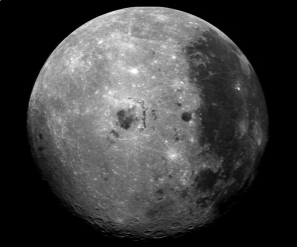
This is Shortwave Radiogram in MFSK64
Please send your reception report to
radiogram@verizon.net
This week's images ...
Afghan women take a walk after the first snowfall of the year on
top of a hill on the outskirts of Kabul. From
bit.ly/2F5TVhH ...
Sending Pic:206x197C;
Sitting five metres beneath the surface of the North Sea, Under
is set to become Europe's first -- and the world's largest --
underwater restaurant. From
cnn.it/2sd2mA7 ...
Sending Pic:180x189C;

A partial solar eclipse is seen through a silhouette of a bird
sitting on tree branches in Yinchuan, Ningxia Hui Autonomous
Region, China. From bit.ly/2SHP62c ...
Sending Pic:206x165C;

Our painting of the week is "Winter Night Landscape" by Vanda
Bleavins. From
bit.ly/2D1Cgq8 ...
This is Shortwave Radiogram in MFSK64
Please send your reception report to radiogram@verizon.net
Next, the fourthAxu»x images of the Tecsun Radios International
decoding competition.
See
https://www.tecsunradios.com.au/store/decodetowin-a-tecsun-pl880/
You will hear the voice of Jeff White, followed by more
information in MFSK64, followed by the image.
Tecsun Radios Australia is a second-generation, family-owned and
operated Australian business that has established itself as the
premier dedicated communications radio provider servicing
Australia, New Zealand and the South Pacific region.
When you purchase a radio from Tecsun Radios Australia you are
supporting a small Australian business that support local jobs
and local industry.
We conduct all of our warehousing, marketing, advertising,
printing, from local businesses and source our Australia pinned
AC chargers with C tick approval from an Australian supplier.
Tecsun Radios also extends a wealth of product knowledge and
experience to customers through our email and phone support
channels to ensure customers receive the best advice and get the
most from their radio purchase. Tecsun Radios Australia also
provides the warranty on purchases in Australia and carries a
range of spare parts to facilitate repairs.
Sending Pic:225x150C;
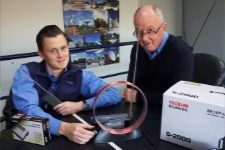
https://www.tecsunradios.com.au/store/decodetowin-a-tecsun-pl880/
Shortwave Radiogram now returns to MFSK32 ...
RSID: <<2019-01-11T20:57Z
MFSK-32 @
7780000+1500>>
This is Shortwave Radiogram in MFZSK32 ...
Transmission of Shortwave Radiogram is provided by:
WRMI, Radio Miami International, http://wrmi.net
and
Space Line, Bulgaria, http://spaceline.bg
Please send reception reports to radiogram@verizon.net
And visit http://swradiogram.net
Twitter:
@SWRadiogram
I'm Kim Elliott. Please join us for the next Shortwave
Radiogram.
http://www.rhci-online.net/radiogram/radiogram.htm
|
QTH: |
D-06193 Petersberg (Germany/Germania) |
|
|
Ant.: |
Dipol for 40m-Band & Boomerang Antenna 11m-Band |
|
|
RX for RF: |
FRG-100B + IF-mixer & ICOM IC-R75 + IF-mixer |
|
|
Software IF: |
con STUDIO1 - Software italiano per SDR [S-AM-USB/LSB] + beta 11 Version 2.80 (August 21, 2018) - for scheduled IF-recording |
|
|
Software AF: |
Fldigi-4.0.18 + flmsg-4.0.7 images-fldigifiles on homedrive.lnk |
|
|
OS: |
German XP-SP3 with support for asian languages |
German W7 32bit + 64bit |
|
PC: |
MEDION Titanium 8008 (since 2003) [ P4 - 2,6 GHz] |
MSI-CR70-2MP345W7 (since2014) [i5 -P3560 ( 2 x 2,6GHz) ] |
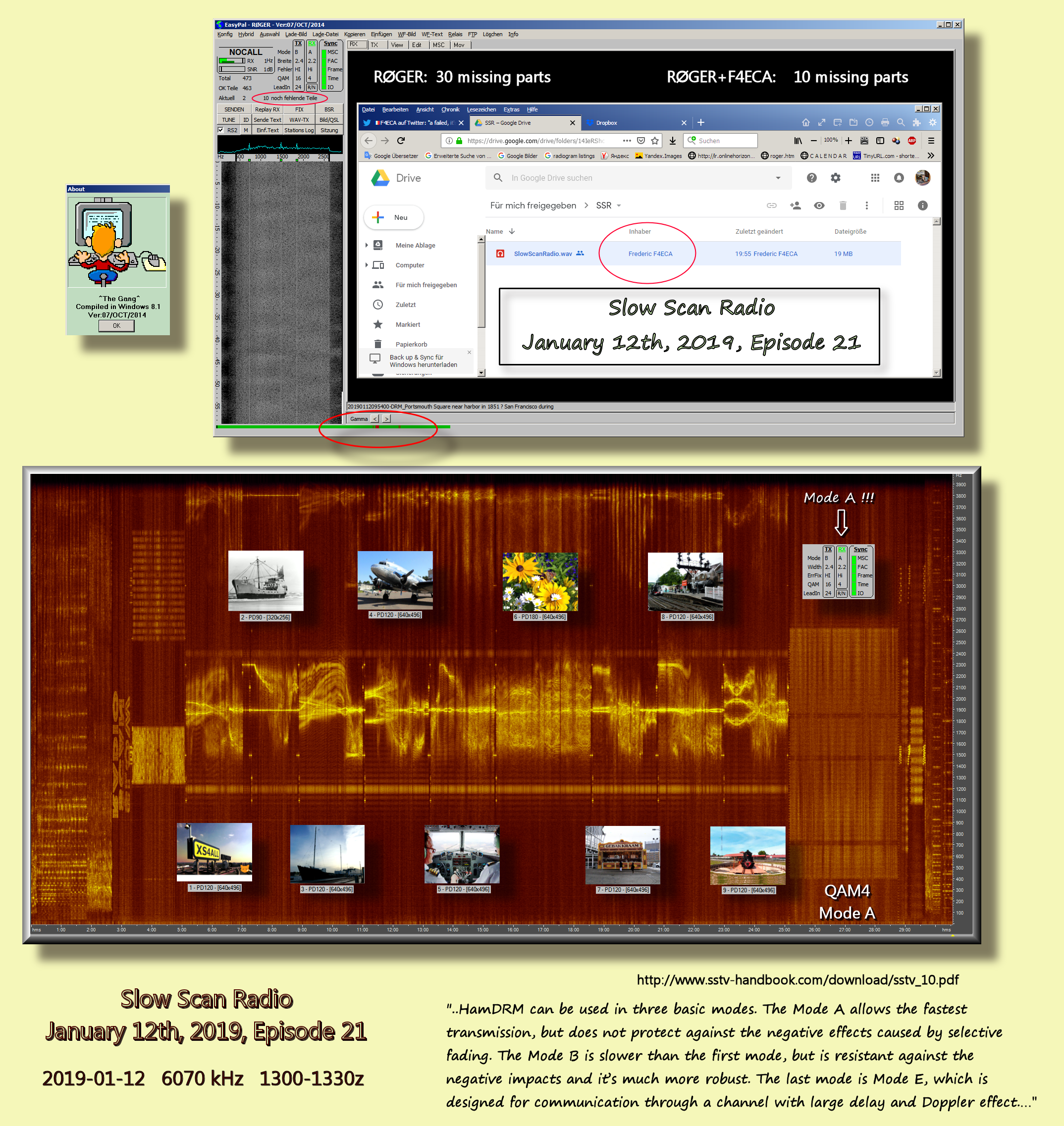
RSID: <<2019-01-12T13:03Z MFSK-32 @ 6070000+1500>>
RSID: <<2019-01-12T13:03Z MFSK-32 @ 6070000+1500>>
Slow Scan Radio January 12th, 2019, Episode 21
A bit late but best wishes for the new year!!
Good afternoon to everyone listening.
Last week I had some minor health problems, so I had to repeat the show of the
week before.
Today we will have 8 or 9 SSTV images one image in DRM (not DMR :-) )
You can receive the DRM images (which start right after the new years wish)
using QSSTV when using Linux.
EasyPal can be used under Windows. But some mention results being not good. A
better alternative might probably be WinDRM, which appears not being avalable
for download at this moment. Preferably use QSSTV if you can.
EasyPal can be used under Windows. But some mention results being not good. A
better alternative might probably be WinDRM, which appears not being avalable
for download at this moment. Preferably use QSSTV if you can.
This info will be in MFSK32. After that we will repeat this text in several
other modes.
Info on the show:
Mail: x@xdv.me
Web: www.slowscanradio.com
Mastodon: @PA0ETE@wokka.be
Twitter: SlowScanRadio
Slow Scan Radio is sponsored by 70MHzshop.nl
de k
https://upload.wikimedia.org/wikipedia/commons/8/88/Xs4alldak.jpg
https://i.pinimg.com/736x/75/ab/dd/75abdd92fc3135c3564419b7c1de850a--capital-radio-pirate.jpg
http://www.boon-electronics.de/king%20david.jpg
https://pbs.twimg.com/media/DcIOzacWsAAyFEU.jpg
https://twitter.com/AT5/status/991371201347031040
https://upload.wikimedia.org/wikipedia/commons/5/5b/DC-3_OH-LCH_Malmi_1.JPG
http://www.free-photos.biz/images/transportation/aircraft/thumb/dc-3_oh-lch_malmi_2.jpg
https://keeptheoldbirdsflying.files.wordpress.com/2014/07/dc-3.jpg?w=1400
https://www.flickr.com/photos/109661044@N07/13963948006/
https://upload.wikimedia.org/wikipedia/commons/b/b9/DC-3_PH-PBA_cockpit_%2813963948006%29.jpg
https://upload.wikimedia.org/wikipedia/commons/e/ec/Blume_mit_Schmetterling_und_Biene_1uf.JPG
https://www.flickr.com/photos/faceme/5307343754
https://c1.staticflickr.com/6/5168/5307343754_5e3cc74a6d_b.jpg
https://www.flickr.com/photos/bods/5031100314
https://c1.staticflickr.com/5/4092/5031100314_48d7a2c876_b.jpg
https://commons.wikimedia.org/wiki/File:Papar_Sabah_Heritage-Steam-Train-Turntable-01.jpg
RSID: <<2019-01-12T13:28Z 10xPSK63R @ 6070000+1500>>
RSID: <<2019-01-12T13:29Z 20xPSK63R @ 6070000+1500>>
Slow Scan Radio January 12th, 2019, Episode 21
A bit late but best wishes for the new year!!
Good afternoon to everyone listening.
Last week I had some minor health problems, so I had to repeat the show of the
week before.
Today we will have 8 or 9 SSTV images one image in DRM (not DMR :-) )
You can receive the DRM images (which start right after the new years wish)
using QSSTV when using Linux.
EasyPal can be used under Windows. But some mention results being not good. A
better alternative might probably be WinDRM, which appears not being avalable
for download at this moment. Preferably use QSSTV if you can.
You can receive the DRM images (which start right after the new years wish)
using QSSTV when using Linux.
EasyPal can be used under Windows. But some mention results being not good. A
better alternative might probably be WinDRM, which appears not being avalable
for download at this moment. Preferably use QSSTV if you can.
This info will be in MFSK32. After that we will repeat this text in several
other modes.
Info on the show:
Mail: x@xdv.me
Web: www.slowscanradio.com
Mastodon: @PA0ETE@wokka.be
Twitter: SlowScanRadio
Slow Scan Radio is sponsored by 70MHzshop.nl
de k